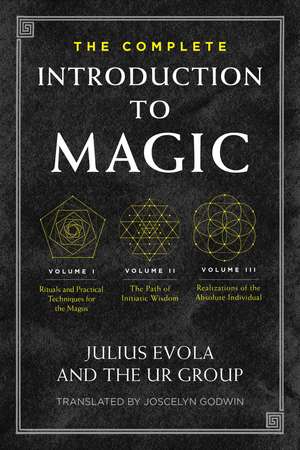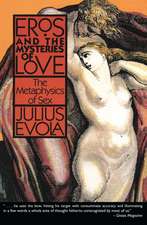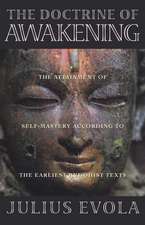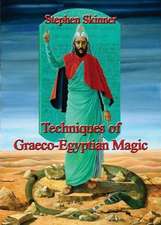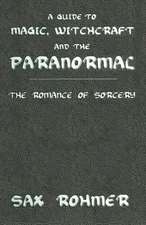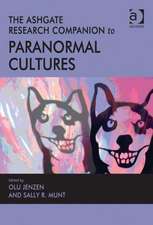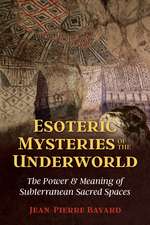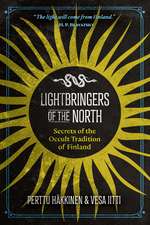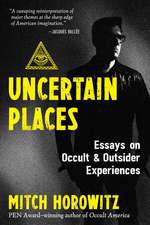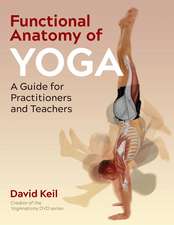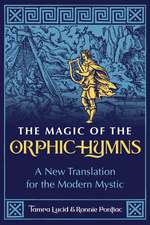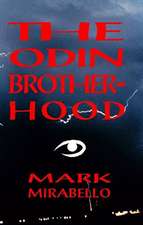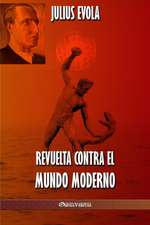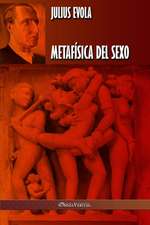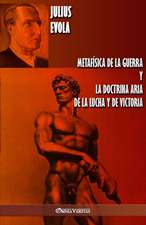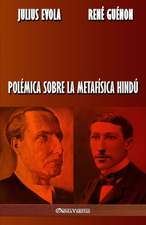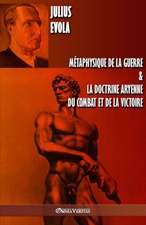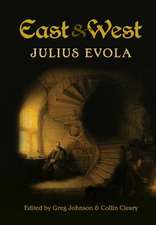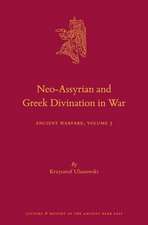The Complete Introduction to Magic
Autor Julius Evola, The UR Groupen Limba Engleză Hardback – 22 noi 2023
In 1927 Julius Evola and other leading Italian esotericists formed the mysterious UR group. The purpose of this group was to study and practice ancient rituals from the mystery traditions of the world, both East and West, in order to attain a state of superhuman consciousness and power to allow them to act magically on the world. They produced a monthly journal containing techniques for spiritual realization, accounts of personal experiences, translations of ancient texts, and original essays on the occult. Many years later, in 1971, Evola gathered these essays into three volumes.
Volume I collects rites, practices, and magical knowledge, including instructions for creating an etheric double, speaking words of power, using fragrances, interacting with entities, and creating a “magical chain.” It also includes translations of rare texts such as the Tibetan teachings of the Thunderbolt Diamond Path, the Mithraic mystery cult’s “Grand Papyrus of Paris,” and the Greco-Egyptian magical text De Mysteriis. Volume II shares authentic initiatic wisdom and a rigorous selection of initiatory exercises, including instructions for creating the diaphanous body of the Opus magicum, and establishing initiatic consciousness after death. It also offers studies of mystery traditions throughout history. Volume III, more than the others, bears the personal stamp of Julius Evola. It explores esoteric practices for individual development, handed down from a primordial tradition and discernable in alchemy, Hermetism, religious doctrines, Tantra, Taoism, Buddhism, Vedanta, and the pagan mysteries of the West.
Available together as a deluxe boxed set for the first time in English, these volumes present the steps necessary to purify the soul with the light of knowledge and the fire of dedication, as well as allowing the reader to be liberated from conventional dogmas—religious, political, scientific, and psychological—and see with the clearer eye of realisation.
Preț: 698.42 lei
Preț vechi: 767.49 lei
-9% Nou
Puncte Express: 1048
Preț estimativ în valută:
133.66€ • 139.03$ • 110.34£
133.66€ • 139.03$ • 110.34£
Carte disponibilă
Livrare economică 22 martie-05 aprilie
Preluare comenzi: 021 569.72.76
Specificații
ISBN-13: 9781644119556
ISBN-10: 1644119552
Pagini: 1328
Ilustrații: 5 b&w illustrations
Dimensiuni: 152 x 229 x 102 mm
Greutate: 2.68 kg
Editura: Inner Traditions/Bear & Company
Colecția Inner Traditions
ISBN-10: 1644119552
Pagini: 1328
Ilustrații: 5 b&w illustrations
Dimensiuni: 152 x 229 x 102 mm
Greutate: 2.68 kg
Editura: Inner Traditions/Bear & Company
Colecția Inner Traditions
Notă biografică
Julius Evola (1898–1974) is considered one of the foremost authorities on the world’s esoteric traditions. A controversial scholar, philosopher, social thinker, and critic of modern Western civilization, he wrote extensively on Eastern religions, alchemy, sexuality, politics, mythology, and traditionalism, leading to the development of his “magical idealism” doctrine. He published many books, including Revolt Against the Modern World, The Hermetic Tradition, Men Among the Ruins, Eros and the Mysteries of Love, The Doctrine of Awakening, and The Yoga of Power.
Cuprins
BOOK I
Editor’s Note ix Foreword: Julius Evola and the UR Group by Renato Del Ponte
Introduction
PART I
I.1 PIETRO NEGRI • Sub Specie Interioritatis
I.2 LEO • Barriers
I.3 ABRAXA • Knowledge of the Waters
I.4 LUCE • Opus Magicum: Concentration and Silence
I.5 EA • The Nature of Initiatic Knowledge
PART II
II.1 The Path of Awakening according to Gustav Meyrink
II.2 LUCE • Opus Magicum: Fire
II.3 ABRAXA • Three Ways
II.4 LEO • Attitudes
II.5 Commentaries on the Opus Magicum
PART III
III.1 LEO • First Steps toward the Experience of the “Subtle Body”
III.2 Knowledge as Liberation
III.3 ABRAXA • The Hermetic Caduceus and the Mirror
III.4 LUCE • Opus Magicum: The “Words of Power” and the Characters of Beings
III.5 PIETRO NEGRI • Knowledge of the Symbol
PART IV
IV.1 Apathanatismos: Mithraic Ritual of the Great Magical Papyrus of Paris
PART V
V.1 Summary
V.2 ABRAXA • Instructions for the “Awareness of Breath”
V.3 OSO • Notes on the Logos
V.4 AROM • First Experiences
V.5 EA • The Problem of Immortality
PART VI
VI.1 LEO • Beyond the Threshold of Sleep
VI.2 EA • On the Magical View of Life
VI.3 ABRAXA • The Second Preparation of the Hermetic Caduceus VI.4 IAGLA • Experiences: The Law of Beings
VI.5 The Path of Realization according to Buddha
VI.6 Various Commentaries
PART VII
VII.1 LUCE • Instructions for Ceremonial Magic
VII.2 EA • The Doctrine of the “Immortal Body”
VII.3 De Pharmaco Catholico
PART VIII
VIII.1 ABRAXA • Magical Operations with “Two Vessels”—Reduplication
VIII.2 Tibetan Initiatic Teachings: The “Void” and the “Diamond-Thunderbolt”
VIII.3 ARVO • On the Counter-Initiation
VIII.4 LUCE • Opus Magicum: Perfumes
PART IX
IX.1 ARVO • Conscious Thought—Relaxation—Silence
IX.2 EA • Considerations on Magic and Its Powers
IX.3 ABRAXA • Magic of the Image
IX.4 PIETRO NEGRI • An Italian Alchemical Text on Lead Tablets
PART X
X.1 LUCE • Opus Magicum: Chains
X.2 LEO • The Attitude toward Initiatic Teaching
X.3 EA • Freedom, Precognition, and the Relativity of Time X.4 Commentary on the Opus Magicum
PART XI
XI.1 IAGLA • Serpentine Wisdom
XI.2 LUCE • Invocations
XI.3 Excerpts from De Mysteriis
XI.4 The Message of the Polar Star
XI.5 SIRIUS • Mist and Symbols
XI.6 EA • On the General Doctrine of Mantras
PART XII
XII.1 ALBA • De Naturae Sensu
XII.2 LEO • Aphorisms
XII.3 PIETRO NEGRI • Adventures and Misadventures in Magic
XII.4 Various Commentaries
BOOK II
Foreword: The “Magical” Gruppo di UR in Its Historical and Esoteric Context by Hans Thomas Hakl
Introduction to the Second Volume
PART I
I.1 PYTHAGORAS • The Golden Verses
I.2 ARVO AND EA • The Esoteric Doctrine of the “Centers” in a Christian Mystic
I.3 ABRAXA • Ritual Magic
PART II
II.1 Instructions for Magical Chains
Individual Instructions for Preparation
First Instructions for the Chain
Instructions for a Later Phase
II.2 IAGLA • Subterranean Logic
II.3 PIETRO NEGRI • On the Western Tradition
1. Devaluation of the Pagan Tradition
2. East, West, and Christianity
3. The Initiatic Tradition in the West
4. The Roman Tradition
5. Roman Initiatic Wisdom
6. The Legend of Saturnus
7. Etymology of Saturn
8. Addenda
9. Agricultural Symbolism in Rome
PART III
III.1 HAVISMAT • Tradition and Realization
III.2 OSO • A Solar Will
III.3 PIETRO NEGRI • The Secret Language of the Fedeli d’Amore III.4 ABRAXA • Solutions of Rhythm and Liberation
III.5 LUCE • Opus Magicum: The Diaphanous Body
PART IV
IV.1 ARVO • Vitalizing the “Signs” and “Grips”
IV.2 EA • Initiatic Consciousness beyond the Grave
IV.3 Various Commentaries
The Magic, The Master, The Song
PART V
V.1 IAGLA • On the “Corrosive Waters”
V.2 ARVO • Ethnology and the “Perils of the Soul”
V.3 On the Art of the Hermetic Philosophers
V.4 Various Commentaries
Desire in Magic — Meaning of the Ritual —Feeling and Realization — Anticipations of Physical Alchemy —On Shamanic Initiation
PART VI
VI.1 Experiences: The “Double” and Solar Consciousness
VI.2 EA • On the Metaphysics of Pain and Illness
VI.3 LEO • Notes for the Animation of the “Centers”
VI.4 ARVO • Kirillov and Initiation
PART VII
VII.1 HAVISMAT • Notes on Ascesis and on Anti-Europe
VII.2 MILAREPA • Excerpts from the Life of Milarepa
The Demon of the Snows —The Song of Joy — The Song of the Essence of Things
VII.3 ARVO • The Magic of Effigies
PART VIII
VIII.1 EA • Esotericism and Morality
VIII.2 NILIUS • Medicine and Poison
VIII.3 Turba Philosophorum: The Assembly of the Wise
VIII.4 Various Commentaries
Corporealizing Consciousness —On “Mortification” — On Power
PART IX
IX.1 ABRAXA • The Magic of Creation
IX.2 PIETRO NEGRI • On the Opposition Contingent on Spiritual Development
IX.3 Some Effects of Magical Discipline: The “Dissociation of the Mixed”
PART X
X.1 The Contrast between Positive Science and Magic: Positions and Solutions
X.2 ABRAXA • The Magic of Conjunctions
X.3 OTAKAR BŘEZINA • Perspectives
X.4 Various Commentaries
Prodigies and Former Times — Sexual Magic
PART XI
XI.1 BRENO • Notes on Occult Morphology and Spiritual Corporeality XI.2 ZAM • A Pagan Magical Spell
XI.3 ARVO • On the Hyperborean Tradition
XI.4 The Golden Flower of the Great One
XI.5 Various Commentaries
Woman and Initiation — Ex Oriente lux
Index
Book III
Introduction to the Third Volume
PART I
I.1 Paths of the Western Spirit
I.2 ABRAXA • The Cloud and the Stone
I.3 BRENO • Modern Initiation and Eastern Initiation
I.4 HAVISMAT • The Zone of Shadow
I.5 EA • Poetry and Initiatic Realization
PART II
II.1 EA • Aristocracy and the Initiatic Ideal
II.2 BŘEZINA • Canticle of the Fire 5
II.3 ARVO • About an “Arithmetical Oracle” and the Backstage of Consciousness
II.4 AROM • Experiences: The Crown of Light
II.5 GERHARD DORN • Clavis Philosophiae Chemisticae
(The Key of Alchemical Philosophy)
Edited by Tikaipôs
II.6 Various Commentaries
Difficulties of Belief
He Who “Saw” the Gods
Men and Gods
PART III
III.1 EA • The Legend of the Grail and the “Mystery” of the Empire
III.2 HAVISMAT • The Instant and Eternity
III.3 ABRAXA • Communications
III.4 PICO DELLA MIRANDOLA • The Dignity of Man
III.5 Commentaries
PART IV
IV.1 APRO • The Cycles of Consciousness
IV.2 TAURULUS • Experiences
IV.3 EA • What Is “Metaphysical Reality”?
IV.4 IAGLA • On the “Law of Beings”
IV.5 Various Commentaries
PART V
V.1 PLOTINUS • Maxims of Pagan Wisdom
V.2 LEO • Human Rhythms and Cosmic Rhythms
V.3 Experiences of a Chain
V.4 EA • On the Limits of Initiatic “Regularity”
PART VI
VI.1 C. S. NARAYANA SWAMI AIYAR •
Transmutation of Man and Metals
VI.2 EA • On the Symbolism of the Year
VI.3 ABRAXA • The Magic of Victory
VI.4 ARVO • The “Origin of Species,” According to Esotericism
PART VII
VII.1 Various Commentaries
More on Survival • On Pacts, Fear, and More
VII.2 EA • On the “Sacred” in the Roman Tradition
VII.3 Liberation of the Faculties
PART VIII
VIII.1 Starting Magic, According to Giuliano Kremmerz
VIII.2 RUD • First Ascent
VIII.3 ABRAXA • Knowledge of the Sacrificial Act
VIII.4 Various Commentaries
On Sacrifice
PART IX
IX.1 SIRIO • Noise
IX.2 PAUL MASSON-OURSEL • On the Role of Magic in Hindu Speculation
IX.3 EA • Esotericism and Christian Mysticism
IX.4 GIC • From “The Song of Time and the Seed”
IX.5 Metapsychology and Magical Phenomena
IX.6 LEO • The “Plumed Serpent”
PART X
X.1 AGARDA • Remarks on Action in the Passions
X.2 SAGITTARIO • Awakening
X.3 ARVO • The “Primitives” and Magical Science
X.4 AGNOSTUS • Two Hyperborean Symbols
X.5 GALLUS • Experiences among the Arabs
X.6 Various Commentaries
PART XI
XI.1 MAXIMUS • Notes on “Detachment”
XI.2 The Ascetic, Fire, Rock, Space •
From the Milindapañha
XI.3 EA • Spiritual Authority and Temporal Power
XI.4 About Drugs
XI.5 Various Commentaries
Seeing Without Wanting to See Ways to the “Void”
PART XII
XII.1 EKATLOS • The “Great Sign”:On Stage and in the Wings
XII.2 EA • Esotericism, the Unconscious, Psychoanalysis
XII.3 ANAGARIKA GOVINDA • The Double Mask
XII.4 Magical Perspectives, According to Aleister Crowley
XII.5 Envoi
Index
Editor’s Note ix Foreword: Julius Evola and the UR Group by Renato Del Ponte
Introduction
PART I
I.1 PIETRO NEGRI • Sub Specie Interioritatis
I.2 LEO • Barriers
I.3 ABRAXA • Knowledge of the Waters
I.4 LUCE • Opus Magicum: Concentration and Silence
I.5 EA • The Nature of Initiatic Knowledge
PART II
II.1 The Path of Awakening according to Gustav Meyrink
II.2 LUCE • Opus Magicum: Fire
II.3 ABRAXA • Three Ways
II.4 LEO • Attitudes
II.5 Commentaries on the Opus Magicum
PART III
III.1 LEO • First Steps toward the Experience of the “Subtle Body”
III.2 Knowledge as Liberation
III.3 ABRAXA • The Hermetic Caduceus and the Mirror
III.4 LUCE • Opus Magicum: The “Words of Power” and the Characters of Beings
III.5 PIETRO NEGRI • Knowledge of the Symbol
PART IV
IV.1 Apathanatismos: Mithraic Ritual of the Great Magical Papyrus of Paris
PART V
V.1 Summary
V.2 ABRAXA • Instructions for the “Awareness of Breath”
V.3 OSO • Notes on the Logos
V.4 AROM • First Experiences
V.5 EA • The Problem of Immortality
PART VI
VI.1 LEO • Beyond the Threshold of Sleep
VI.2 EA • On the Magical View of Life
VI.3 ABRAXA • The Second Preparation of the Hermetic Caduceus VI.4 IAGLA • Experiences: The Law of Beings
VI.5 The Path of Realization according to Buddha
VI.6 Various Commentaries
PART VII
VII.1 LUCE • Instructions for Ceremonial Magic
VII.2 EA • The Doctrine of the “Immortal Body”
VII.3 De Pharmaco Catholico
PART VIII
VIII.1 ABRAXA • Magical Operations with “Two Vessels”—Reduplication
VIII.2 Tibetan Initiatic Teachings: The “Void” and the “Diamond-Thunderbolt”
VIII.3 ARVO • On the Counter-Initiation
VIII.4 LUCE • Opus Magicum: Perfumes
PART IX
IX.1 ARVO • Conscious Thought—Relaxation—Silence
IX.2 EA • Considerations on Magic and Its Powers
IX.3 ABRAXA • Magic of the Image
IX.4 PIETRO NEGRI • An Italian Alchemical Text on Lead Tablets
PART X
X.1 LUCE • Opus Magicum: Chains
X.2 LEO • The Attitude toward Initiatic Teaching
X.3 EA • Freedom, Precognition, and the Relativity of Time X.4 Commentary on the Opus Magicum
PART XI
XI.1 IAGLA • Serpentine Wisdom
XI.2 LUCE • Invocations
XI.3 Excerpts from De Mysteriis
XI.4 The Message of the Polar Star
XI.5 SIRIUS • Mist and Symbols
XI.6 EA • On the General Doctrine of Mantras
PART XII
XII.1 ALBA • De Naturae Sensu
XII.2 LEO • Aphorisms
XII.3 PIETRO NEGRI • Adventures and Misadventures in Magic
XII.4 Various Commentaries
BOOK II
Foreword: The “Magical” Gruppo di UR in Its Historical and Esoteric Context by Hans Thomas Hakl
Introduction to the Second Volume
PART I
I.1 PYTHAGORAS • The Golden Verses
I.2 ARVO AND EA • The Esoteric Doctrine of the “Centers” in a Christian Mystic
I.3 ABRAXA • Ritual Magic
PART II
II.1 Instructions for Magical Chains
Individual Instructions for Preparation
First Instructions for the Chain
Instructions for a Later Phase
II.2 IAGLA • Subterranean Logic
II.3 PIETRO NEGRI • On the Western Tradition
1. Devaluation of the Pagan Tradition
2. East, West, and Christianity
3. The Initiatic Tradition in the West
4. The Roman Tradition
5. Roman Initiatic Wisdom
6. The Legend of Saturnus
7. Etymology of Saturn
8. Addenda
9. Agricultural Symbolism in Rome
PART III
III.1 HAVISMAT • Tradition and Realization
III.2 OSO • A Solar Will
III.3 PIETRO NEGRI • The Secret Language of the Fedeli d’Amore III.4 ABRAXA • Solutions of Rhythm and Liberation
III.5 LUCE • Opus Magicum: The Diaphanous Body
PART IV
IV.1 ARVO • Vitalizing the “Signs” and “Grips”
IV.2 EA • Initiatic Consciousness beyond the Grave
IV.3 Various Commentaries
The Magic, The Master, The Song
PART V
V.1 IAGLA • On the “Corrosive Waters”
V.2 ARVO • Ethnology and the “Perils of the Soul”
V.3 On the Art of the Hermetic Philosophers
V.4 Various Commentaries
Desire in Magic — Meaning of the Ritual —Feeling and Realization — Anticipations of Physical Alchemy —On Shamanic Initiation
PART VI
VI.1 Experiences: The “Double” and Solar Consciousness
VI.2 EA • On the Metaphysics of Pain and Illness
VI.3 LEO • Notes for the Animation of the “Centers”
VI.4 ARVO • Kirillov and Initiation
PART VII
VII.1 HAVISMAT • Notes on Ascesis and on Anti-Europe
VII.2 MILAREPA • Excerpts from the Life of Milarepa
The Demon of the Snows —The Song of Joy — The Song of the Essence of Things
VII.3 ARVO • The Magic of Effigies
PART VIII
VIII.1 EA • Esotericism and Morality
VIII.2 NILIUS • Medicine and Poison
VIII.3 Turba Philosophorum: The Assembly of the Wise
VIII.4 Various Commentaries
Corporealizing Consciousness —On “Mortification” — On Power
PART IX
IX.1 ABRAXA • The Magic of Creation
IX.2 PIETRO NEGRI • On the Opposition Contingent on Spiritual Development
IX.3 Some Effects of Magical Discipline: The “Dissociation of the Mixed”
PART X
X.1 The Contrast between Positive Science and Magic: Positions and Solutions
X.2 ABRAXA • The Magic of Conjunctions
X.3 OTAKAR BŘEZINA • Perspectives
X.4 Various Commentaries
Prodigies and Former Times — Sexual Magic
PART XI
XI.1 BRENO • Notes on Occult Morphology and Spiritual Corporeality XI.2 ZAM • A Pagan Magical Spell
XI.3 ARVO • On the Hyperborean Tradition
XI.4 The Golden Flower of the Great One
XI.5 Various Commentaries
Woman and Initiation — Ex Oriente lux
Index
Book III
Introduction to the Third Volume
PART I
I.1 Paths of the Western Spirit
I.2 ABRAXA • The Cloud and the Stone
I.3 BRENO • Modern Initiation and Eastern Initiation
I.4 HAVISMAT • The Zone of Shadow
I.5 EA • Poetry and Initiatic Realization
PART II
II.1 EA • Aristocracy and the Initiatic Ideal
II.2 BŘEZINA • Canticle of the Fire 5
II.3 ARVO • About an “Arithmetical Oracle” and the Backstage of Consciousness
II.4 AROM • Experiences: The Crown of Light
II.5 GERHARD DORN • Clavis Philosophiae Chemisticae
(The Key of Alchemical Philosophy)
Edited by Tikaipôs
II.6 Various Commentaries
Difficulties of Belief
He Who “Saw” the Gods
Men and Gods
PART III
III.1 EA • The Legend of the Grail and the “Mystery” of the Empire
III.2 HAVISMAT • The Instant and Eternity
III.3 ABRAXA • Communications
III.4 PICO DELLA MIRANDOLA • The Dignity of Man
III.5 Commentaries
PART IV
IV.1 APRO • The Cycles of Consciousness
IV.2 TAURULUS • Experiences
IV.3 EA • What Is “Metaphysical Reality”?
IV.4 IAGLA • On the “Law of Beings”
IV.5 Various Commentaries
PART V
V.1 PLOTINUS • Maxims of Pagan Wisdom
V.2 LEO • Human Rhythms and Cosmic Rhythms
V.3 Experiences of a Chain
V.4 EA • On the Limits of Initiatic “Regularity”
PART VI
VI.1 C. S. NARAYANA SWAMI AIYAR •
Transmutation of Man and Metals
VI.2 EA • On the Symbolism of the Year
VI.3 ABRAXA • The Magic of Victory
VI.4 ARVO • The “Origin of Species,” According to Esotericism
PART VII
VII.1 Various Commentaries
More on Survival • On Pacts, Fear, and More
VII.2 EA • On the “Sacred” in the Roman Tradition
VII.3 Liberation of the Faculties
PART VIII
VIII.1 Starting Magic, According to Giuliano Kremmerz
VIII.2 RUD • First Ascent
VIII.3 ABRAXA • Knowledge of the Sacrificial Act
VIII.4 Various Commentaries
On Sacrifice
PART IX
IX.1 SIRIO • Noise
IX.2 PAUL MASSON-OURSEL • On the Role of Magic in Hindu Speculation
IX.3 EA • Esotericism and Christian Mysticism
IX.4 GIC • From “The Song of Time and the Seed”
IX.5 Metapsychology and Magical Phenomena
IX.6 LEO • The “Plumed Serpent”
PART X
X.1 AGARDA • Remarks on Action in the Passions
X.2 SAGITTARIO • Awakening
X.3 ARVO • The “Primitives” and Magical Science
X.4 AGNOSTUS • Two Hyperborean Symbols
X.5 GALLUS • Experiences among the Arabs
X.6 Various Commentaries
PART XI
XI.1 MAXIMUS • Notes on “Detachment”
XI.2 The Ascetic, Fire, Rock, Space •
From the Milindapañha
XI.3 EA • Spiritual Authority and Temporal Power
XI.4 About Drugs
XI.5 Various Commentaries
Seeing Without Wanting to See Ways to the “Void”
PART XII
XII.1 EKATLOS • The “Great Sign”:On Stage and in the Wings
XII.2 EA • Esotericism, the Unconscious, Psychoanalysis
XII.3 ANAGARIKA GOVINDA • The Double Mask
XII.4 Magical Perspectives, According to Aleister Crowley
XII.5 Envoi
Index
Recenzii
“The essays of the UR Group constitute the most complete and the highest magical teaching ever set before the public. . . . The ultimate goal is the identification of the individual with the Absolute. This is a powerful and disturbing book, and a classic. One can be quite certain that it will still have readers centuries from now.”
“Introduction to Magic, vol. I, should be standard reading for any serious academic or practical student of occultism. . . . Experienced occultists will welcome it as a breath of fresh air and a journey into little discussed territories.”
“The collection of essays in Introduction to Magic, vol. I . . . cover the practical, the theoretical, and the unclassifiable, such as the Mithraic Ritual of the Great Magical Papyrus of Paris, the only ritual from the ancient Mysteries to have survived intact.”
“The formulas that Evola transmits, and the complex listing of the causes and effects that accompany them, seem to me so important, not only for spiritual life but for the use of all the faculties, that I know of no human condition that they cannot improve, whether in the case of the man of action, of the writer, or simply the person in the toils of life.”
“A dazzling and interesting, but very dangerous, author . . .”
“One of the most difficult and ambiguous figures in modern esotericism.”
“Evola . . . had a clarity of mind and a gift for explaining tremendously difficult concepts in nonacademic language. . . . His descriptions of subtle states and the practices that lead to them are as lucid as these difficult subjects allow.”
“Eros and the Mysteries of Love invokes the rich sexual symbolism of religious myths and mysteries throughout history, from the I Ching to the Kabbalah, to illustrate the redemptive power of the sexual act.”
“Revolt Against the Modern World is destined to remain an essential work and frame-of-reference for anyone seriously involved in native European spirituality.”
“Disgusted by the cruelty and artificiality of communism, scorning the dogmatic, self-centered fascism of his age, Evola looks beyond man-made systems in Men Among the Ruins to the eternal principles in creation and human society. The truth, as he sees it, is so totally at odds with the present way of thinking that it shocks the modern mind. Evola was no politician, trying to make the best of things, but an idealist, uncompromising in the pursuit of the best itself.”
“Men Among the Ruins is Julius Evola’s most notorious work: an unsparing indictment of modern society and politics. This book is not a work for complacent, self-satisfied minds . . . it is a shocking and humbling text that will be either loved or hated. Evola’s enemies cannot refute him; they can only ignore him. They do so at their peril.”
“In Ride the Tiger Evola shows, unintentionally but with passion, why European Tradition may not be able to match East Asia in riding the tiger in today’s world. It lacks a spirituality for today’s mundane world, tempered by the harsh realism of Daoism and the practical disciplines of Confucianism.”
“Those who look to Julius Evola’s work for guidance have often wondered what practices Evola himself used to get in contact with Tradition. The answer lies in Introduction to Magic, which represents the records left behind by the UR Group, the mysterious occult order that was the medium through which Evola first experienced the reality of Tradition and grasped its essence. Many of the themes and concepts which were to recur in Evola’s later work are already present in these documents. The great importance Evola attached to these volumes is attested by the belief of Evola’s biographer that the original manuscripts were the only belongings he took with him when he was forced to flee Rome in 1944. The fact that this work is finally available in its entirety to Anglophone readers, masterfully translated by Joscelyn Godwin, is therefore a great service to genuine spiritual seekers everywhere.”
“I am impressed by this fine translation of some of my old mentor Julius Evola’s works. I find that ‘Aristocracy and the Initiatic Ideal’ conveys very well the baron’s own beliefs and sentiments as to what it means today to be a true aristocrat among the ruins. Exceedingly insightful comments, as one would indeed expect. A truly excellent publication.”
“Introduction to Magic, vol. I, should be standard reading for any serious academic or practical student of occultism. . . . Experienced occultists will welcome it as a breath of fresh air and a journey into little discussed territories.”
“The collection of essays in Introduction to Magic, vol. I . . . cover the practical, the theoretical, and the unclassifiable, such as the Mithraic Ritual of the Great Magical Papyrus of Paris, the only ritual from the ancient Mysteries to have survived intact.”
“The formulas that Evola transmits, and the complex listing of the causes and effects that accompany them, seem to me so important, not only for spiritual life but for the use of all the faculties, that I know of no human condition that they cannot improve, whether in the case of the man of action, of the writer, or simply the person in the toils of life.”
“A dazzling and interesting, but very dangerous, author . . .”
“One of the most difficult and ambiguous figures in modern esotericism.”
“Evola . . . had a clarity of mind and a gift for explaining tremendously difficult concepts in nonacademic language. . . . His descriptions of subtle states and the practices that lead to them are as lucid as these difficult subjects allow.”
“Eros and the Mysteries of Love invokes the rich sexual symbolism of religious myths and mysteries throughout history, from the I Ching to the Kabbalah, to illustrate the redemptive power of the sexual act.”
“Revolt Against the Modern World is destined to remain an essential work and frame-of-reference for anyone seriously involved in native European spirituality.”
“Disgusted by the cruelty and artificiality of communism, scorning the dogmatic, self-centered fascism of his age, Evola looks beyond man-made systems in Men Among the Ruins to the eternal principles in creation and human society. The truth, as he sees it, is so totally at odds with the present way of thinking that it shocks the modern mind. Evola was no politician, trying to make the best of things, but an idealist, uncompromising in the pursuit of the best itself.”
“Men Among the Ruins is Julius Evola’s most notorious work: an unsparing indictment of modern society and politics. This book is not a work for complacent, self-satisfied minds . . . it is a shocking and humbling text that will be either loved or hated. Evola’s enemies cannot refute him; they can only ignore him. They do so at their peril.”
“In Ride the Tiger Evola shows, unintentionally but with passion, why European Tradition may not be able to match East Asia in riding the tiger in today’s world. It lacks a spirituality for today’s mundane world, tempered by the harsh realism of Daoism and the practical disciplines of Confucianism.”
“Those who look to Julius Evola’s work for guidance have often wondered what practices Evola himself used to get in contact with Tradition. The answer lies in Introduction to Magic, which represents the records left behind by the UR Group, the mysterious occult order that was the medium through which Evola first experienced the reality of Tradition and grasped its essence. Many of the themes and concepts which were to recur in Evola’s later work are already present in these documents. The great importance Evola attached to these volumes is attested by the belief of Evola’s biographer that the original manuscripts were the only belongings he took with him when he was forced to flee Rome in 1944. The fact that this work is finally available in its entirety to Anglophone readers, masterfully translated by Joscelyn Godwin, is therefore a great service to genuine spiritual seekers everywhere.”
“I am impressed by this fine translation of some of my old mentor Julius Evola’s works. I find that ‘Aristocracy and the Initiatic Ideal’ conveys very well the baron’s own beliefs and sentiments as to what it means today to be a true aristocrat among the ruins. Exceedingly insightful comments, as one would indeed expect. A truly excellent publication.”
Descriere
All three volumes of the occult classic available together as a deluxe boxed set for the first time
